

The Courtesan Charged as a Witch: Venetian Poet Veronica Franco
Summary
Veronica Franco, a celebrated poet and courtesan in Renaissance Venice, navigated the complexities of societal expectations with grace and intellect. Facing challenges like accusations of witchcraft, she defended her honor and continued to advocate for women’s intellectual and sexual autonomy through her writings. Her poetry and letters not only reflect the emotional depth and keen social commentary of her time but also her pioneering role in advocating for women’s rights. Despite the dangers associated with her beauty and position, Franco’s legacy endures as a testament to her resilience, talent, and the nuanced exploration of gender roles in her society.
Reflection Questions
- Veronica Franco leveraged her beauty and intellect to navigate a male-dominated society, yet these attributes also made her vulnerable to criticism and danger. How do you relate to the balance between empowerment and vulnerability in your own life, especially in contexts where societal perceptions of women’s roles are involved?
- Franco used her writings as a platform to advocate for women’s rights and intellectual freedom. How can you use your unique voice or platform to advocate for issues that are important to you? What challenges might you face, and how could you overcome them?
- Considering Veronica Franco’s impact on future generations and her role as an early feminist figure, what legacy do you wish to leave behind? How do you want to influence the perceptions or rights of women in your community or society at large?
Journal Prompt
Veronica Franco was a Venetian courtesan, poet, and alleged witch who wrote many impactful pieces during the sixteenth century. As a courtesan, she navigated the intricate webs of Venetian society, gaining fame not only for her beauty and companionship but also for her sharp intellect and literary prowess. Franco’s role extended beyond the conventional boundaries set for women of her time, as she adeptly balanced her public persona between the realms of sensuality and scholarship. Her significance lies not just in her poetry, which was rich with emotion and insight, but also in her ability to elevate the status of courtesans, presenting them as capable of intellectual and artistic achievements. Her life and work encapsulate the dynamic interplay between gender, power, and expression in Renaissance Italy, making her an enduring subject of fascination and study.
Throughout this article, we will make references to the dual public image that insulated Franco until her witchcraft trial. While the featured image of this article does not literally depict Veronica Franco, it does capture the identity of Venus-Virgin that has been attributed to her by pairing two famous Botticelli paintings: one of the Virgin Mary and one of Venus. Read on to learn more about Franco and her work.
Veronica Franco’s Early Life in Venice
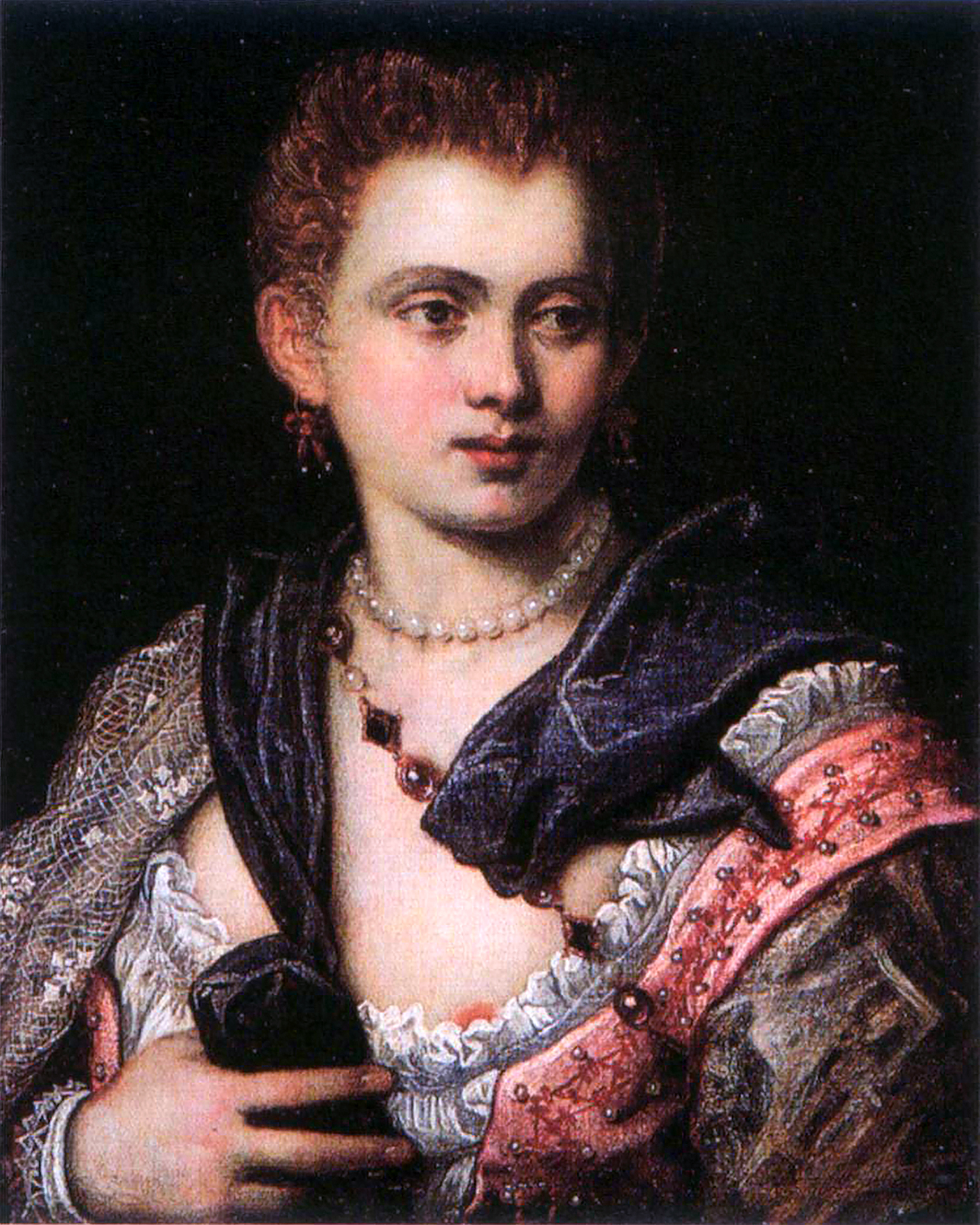

Veronica Franco was born in 1546 in Venice, Italy, into a family that was part of the cittadini, or the citizen class, which stood just below the nobility in the social hierarchy of the Venetian Republic. Her mother was also a courtesan, which provided Veronica with a unique upbringing that straddled the worlds of conventional respectability and the demimonde of Venetian courtesans.
From a young age, Franco was exposed to the arts, literature, and the sophisticated social circles that her mother frequented. This early immersion in the cultural and intellectual life of Venice laid the foundation for her future pursuits. Franco’s education was atypical for women of her time, emphasizing literature, poetry, and music, which were crucial for her later career both as a courtesan and a poet. Her upbringing, thus, was instrumental in shaping her path, offering her the tools and confidence to navigate the complexities of Venetian society.
The Role of Courtesans in Venetian Society
In Renaissance Venice, courtesans occupied a unique and nuanced position within the social fabric. Unlike most women of their time, courtesans were educated and had access to the highest social circles, offering them a degree of autonomy and influence that was otherwise unattainable. They were companions to the wealthy and powerful, engaging in intellectual discourse and providing entertainment in the form of music, conversation, and poetry.
The role of courtesans was a product of Venice’s distinctive social and cultural climate, which tolerated and even celebrated such figures for their contributions to the city’s vibrant cultural life. Veronica Franco, following in her mother’s footsteps, assumed this position not just as a means of survival but as a platform from which to launch her literary career.
Her entry into the world of courtesanship was a deliberate choice, leveraging her beauty, intellect, and education to gain a foothold in the competitive and complex societal landscape of Venice. Through her role as a courtesan, Franco was able to cultivate relationships with influential figures, which she then used to further her status as a poet and intellectual, navigating the constraints and opportunities of her time with remarkable dexterity.
Franco’s Rise to Fame in Venice’s Courts
Veronica Franco’s ascent to prominence within the echelons of Venetian society was as much a testament to her intellectual acumen as it was to her physical allure. In a city renowned for its opulent beauty and sophisticated culture, Franco distinguished herself through her wit, knowledge, and mastery of the poetic arts. Her education, uncommonly comprehensive for a woman of her era, equipped her with the ability to engage in the intellectual discourse typically reserved for men.
She adeptly combined the charm and grace expected of a courtesan with a formidable intellect and talent for poetry, captivating the Venetian elite. Her salon became a hub for literary and philosophical exchange, attracting the admiration of scholars, poets, and aristocrats alike. Franco’s ability to navigate the complex social networks of Venice, paired with her intellectual and artistic contributions, solidified her status as a leading figure in the cultural life of the city. Her fame was not merely a function of her role as a courtesan but was deeply intertwined with her identity as a scholar and poet, challenging contemporary notions of femininity and societal roles.
Franco’s Relationships with Famous Patrons
Veronica Franco’s clientele comprised some of the most powerful and influential men of her time, including noblemen, politicians, and intellectuals, both from Venice and abroad. Her patrons were drawn not only to her physical beauty but also to her intellectual vibrancy and poetic talent. Among them were notable figures such as Domenico Venier, a prominent member of the Venetian nobility and a patron of the arts, who played a significant role in Franco’s literary career. Her relationships with these men were complex, transcending the traditional bounds of courtesan-client interactions to include genuine intellectual and artistic collaboration.
Fuel your creative fire & be a part of a supportive community that values how you love to live.
subscribe to our newsletter
Franco’s ability to engage with her patrons on an intellectual level, discussing politics, philosophy, and literature, set her apart from her contemporaries. These connections provided her with the financial support necessary to pursue her literary ambitions and contributed to her cultural influence in Venice. Through her interactions with these influential figures, Franco not only secured her personal and professional standing but also used her position to advocate for the education and empowerment of women, leveraging her visibility to challenge and redefine the social norms of her time.
Creating Her Image as Venus-Virgin
Historians—like those who curated Worcester Art Museum’s Women of WAM: Depictions of Femininity in Early Modern Europe—often refer to how Franco billed herself as “Venus-Virgin.” Though she did not use this term herself, Veronica Franco’s “Venus-Virgin” self-fashioning refers to a complex and sophisticated manner in which she crafted her public persona, balancing seemingly contradictory attributes of sensuality and chastity, public visibility and private virtue. This term draws from Renaissance concepts of identity and self-presentation, particularly in the context of women’s roles in society.
Venus: The Symbol of Sensuality and Love
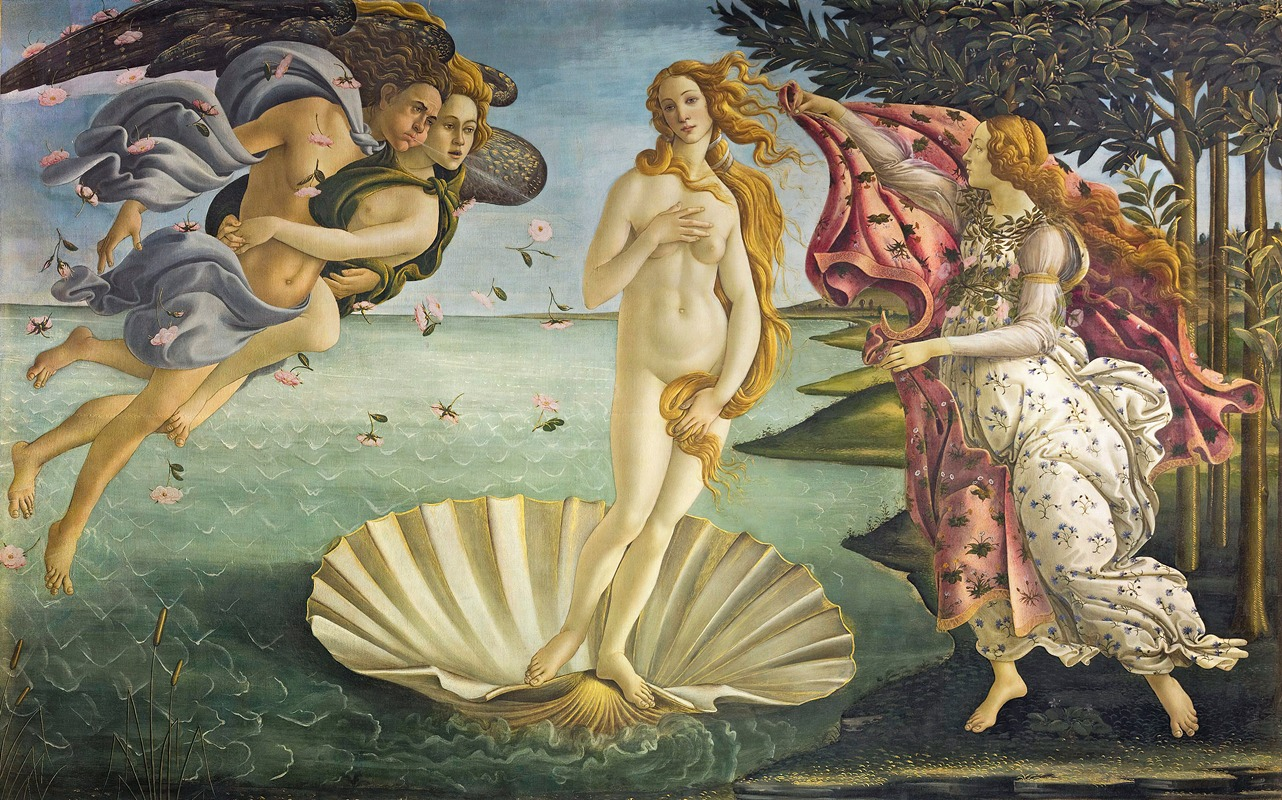

Venus, in Roman mythology, is the goddess of love, beauty, and fertility. In the context of Franco’s self-fashioning, the Venus aspect highlights her role as a courtesan, a woman who was not only educated and cultured but also celebrated for her physical beauty and sexual allure.
This aspect of her identity was public and somewhat performative, aligning with the expectations of a courtesan in Renaissance Venice to be both a companion and an object of desire for the elite men of the society.
Virgin: The Emblem of Chastity and Virtue
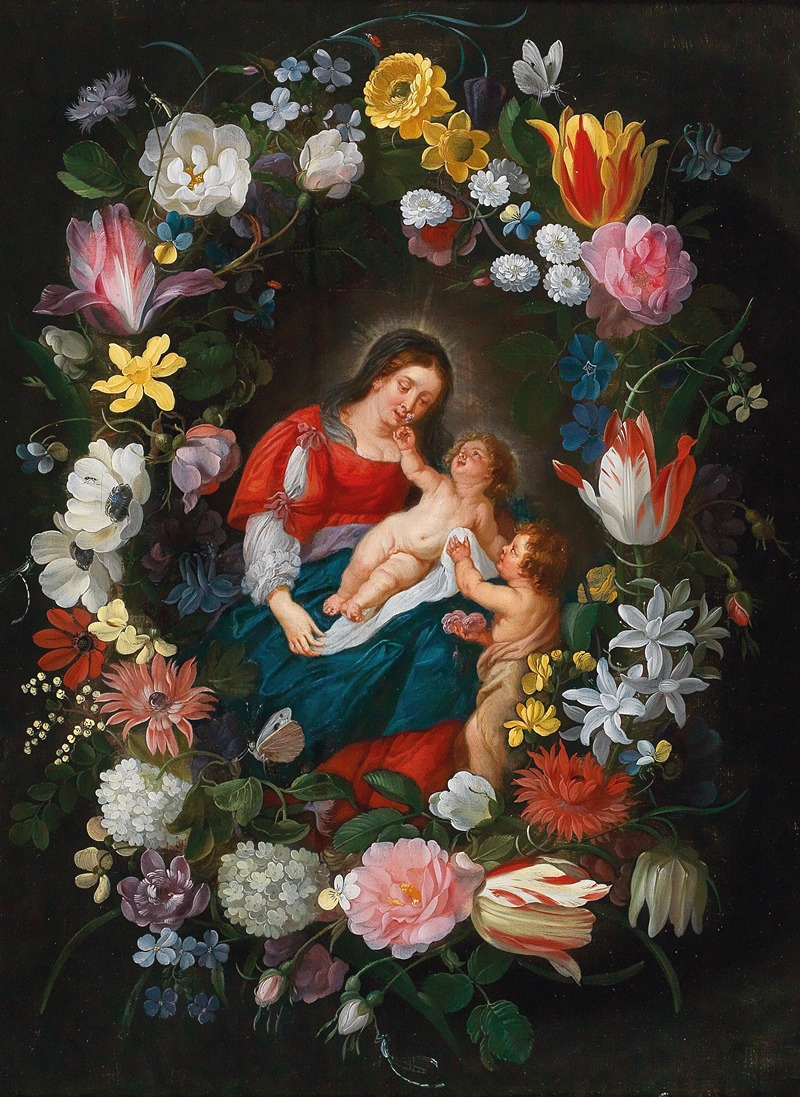

Virgin refers to the idealized qualities of chastity, purity, and moral integrity, typically associated with the Virgin Mary in Christian thought. It’s a symbol of the private, virtuous life that women were expected to lead, emphasizing modesty and moral uprightness.
For Franco, adopting the “Virgin” aspect of her persona meant navigating the societal expectations of female virtue and intellectualism. Despite her occupation, she sought to embody virtue through her intelligence, literary talent, and moral discourse, often defending the worth and dignity of women in her writings.
Self-Fashioning in Renaissance Venice
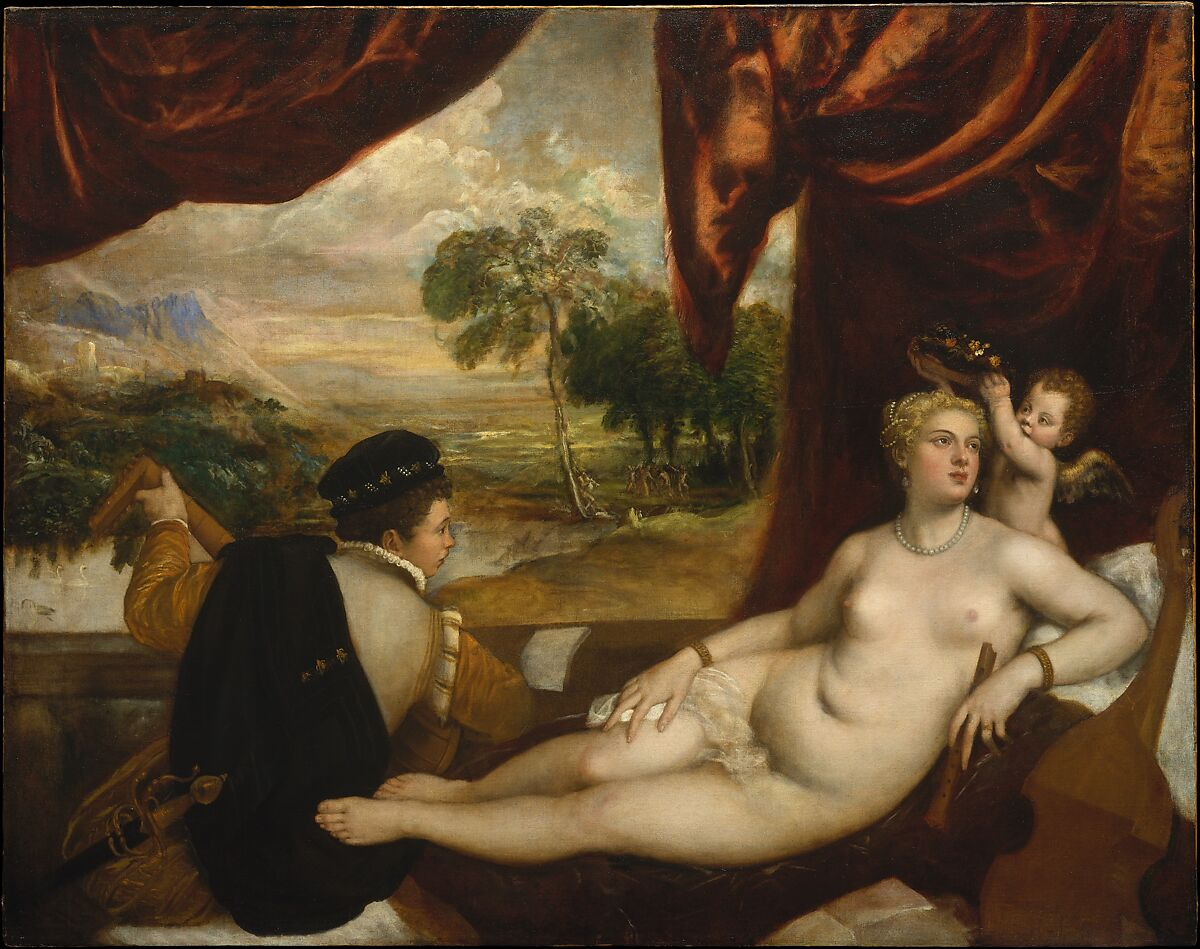

Self-fashioning refers to the Renaissance practice of crafting one’s identity and public image through literature, appearance, and behavior. It was a conscious effort by Venetian women, especially those in the public eye like Franco, to present themselves in a manner that negotiated the complex social and cultural expectations of their time.
For Franco, this meant balancing her roles and public perceptions to navigate the social limitations and opportunities available to her as a woman and courtesan. Her literary work, particularly her poetry, served as a vehicle for this self-fashioning. The poetry Franco published in sixteenth century Venice allowed her to articulate her intellect, moral beliefs, and personal agency.
Significance of Franco’s “Self-Fashioning” in the Venetian Court
Franco’s Venus-Virgin self-fashioning was not merely a survival strategy in a male-dominated society but also a form of resistance and personal expression. By embodying both sensuality and virtue, she challenged the rigid dichotomies of female identity in the Renaissance and advocated for a more nuanced understanding of women’s roles and capabilities.
This strategy allowed her to assert her dignity and intellectual worth in a society that often devalued women, particularly those in her profession, and has made her a fascinating subject of study for modern feminists and historians alike.
Dangerous Beauty and the Duality of Franco’s Identity in Poetry and Court Life
Veronica Franco’s writings often touched upon themes of beauty, love, and the complexities of the courtesan’s life in Renaissance Venice. While she didn’t use the exact phrase “dangerous beauty” in her works, the concept of beauty as both a source of power and vulnerability can be inferred from her poetry and letters. Franco’s work reflects a deep understanding of how beauty and sexual allure, especially within the context of a courtesan’s life, could grant women a certain degree of influence and autonomy in a male-dominated society. However, this same beauty and the visibility it brought also exposed women to danger, scrutiny, and moral judgment.
In her poetry, Franco explores the double-edged sword of her position: her beauty and wit attract patrons and enable her intellectual and artistic expression, yet they also subject her to accusations, such as the aforementioned witchcraft charges, and societal condemnation. She was acutely aware of the precarious balance between leveraging her societal role for autonomy and the risks it entailed.
For instance, in her writings, Franco often advocates for the recognition of women’s intellectual and moral virtues beyond their physical appearance. She challenges the notion that a woman’s value lies solely in her beauty or sexual allure, arguing instead for a recognition of her intellect and moral character. This critique can be seen as addressing the “dangerous” aspect of beauty — that society’s focus on the external can lead to the neglect and undervaluation of inner virtues.
While the specific phrase “dangerous beauty” might not appear in her works, the underlying concept — that beauty can be both empowering and perilous for women — permeates her writing. Through her literary output, Franco navigates the complexities of appearance and reality, offering a nuanced perspective on the role of women in her society and the power dynamics at play.


are you a writer?
Exploring Her Incredible Literary Career
Veronica Franco’s literary output, characterized by its vivid exploration of love, its pioneering feminist undertones, and incisive social commentary, marks a significant departure from the conventional literary norms of Renaissance Venice. Through her poetry and letters, Franco navigates the complexities of romantic and erotic love with an honesty and depth unusual for women of her era, often reflecting on her personal experiences and the broader condition of women in society.
Her work transcends mere autobiographical or romantic themes, delving into the realms of feminist advocacy by challenging the societal constraints placed on women, both in their sexual autonomy and intellectual pursuits. Franco’s writings also serve as a critical lens through which she examines and critiques the social hierarchies and moral duplicities of 16th-century Venetian society, using her personal narrative to underscore broader injustices and inequalities.
Her bold engagement with these themes, coupled with her eloquent expression and intellectual rigor, not only distinguishes her within the Venetian literary tradition but also positions her as a proto-feminist voice, advocating for the recognition and respect of women’s agency and intellect.
Notable Works by Veronica Franco
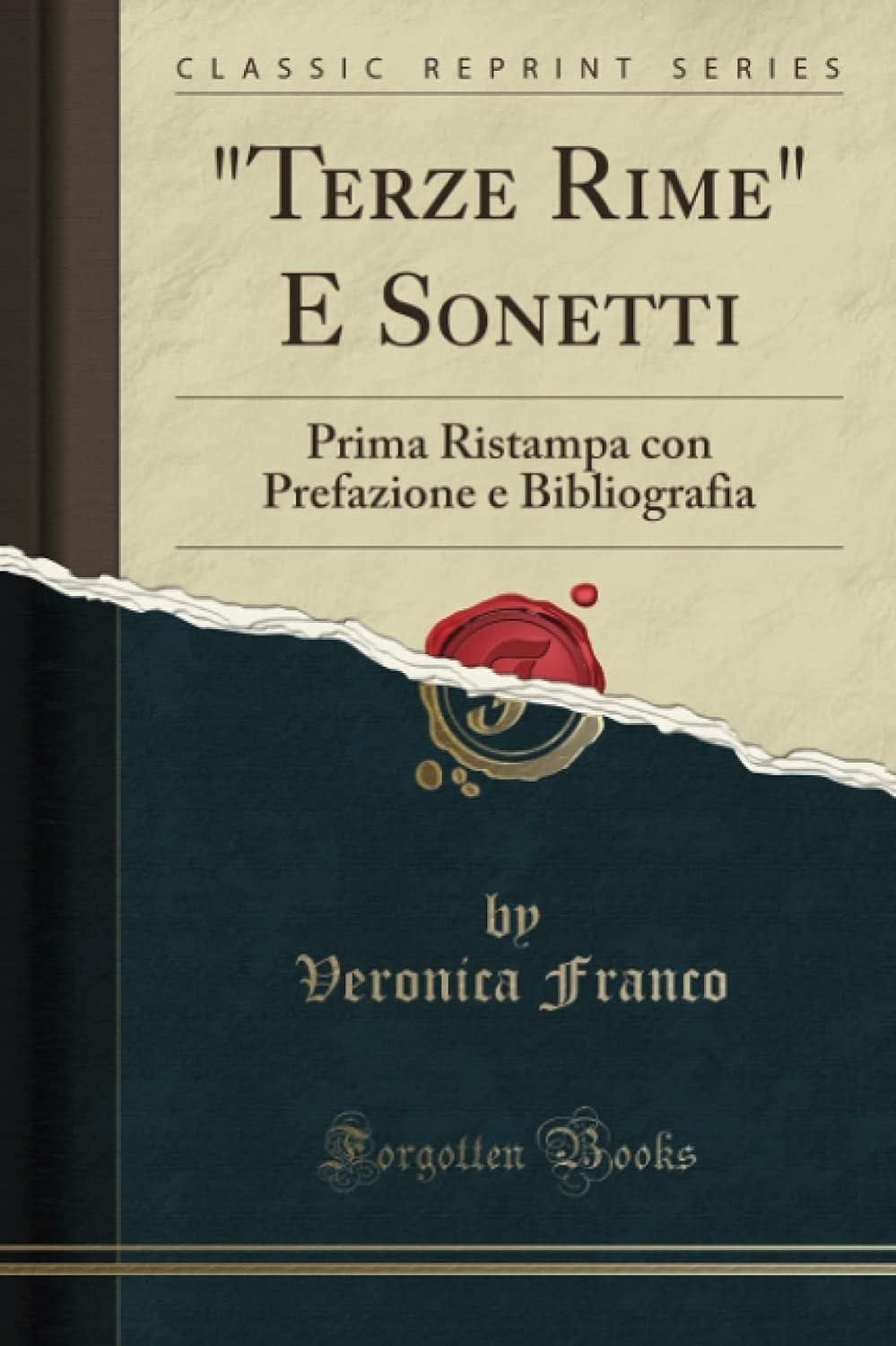

Veronica Franco is best known for her poetry and letters, which were significant both for their literary merit and for the insight they offer into the life and times of a courtesan in Renaissance Venice. Some of her most notable works include the following. These works collectively offer a rich tapestry of Franco’s life, beliefs, and literary talents, showcasing her contributions to the literary and cultural heritage of the Renaissance.
“Terze rime” (1575)
This collection of poems is among Franco’s most celebrated works, showcasing her mastery of the terza rima verse form. The poems delve into themes of love, desire, and the human condition, reflecting both personal experiences and broader social commentary. The collection also includes spirited defenses of women’s intellect and capability, highlighting Franco’s feminist sensibilities. The first fourteen poems of this collection are particularly captivating as they reflect her interactions with male writers of the time.
“Lettere familiari a diversi” (1580)
This collection of letters provides a window into Franco’s life and thoughts, offering direct communication with her contemporaries, including lovers, patrons, and other literary figures. The letters range from intimate love letters to philosophical musings and defenses of women’s rights, demonstrating her intellectual breadth and the complexity of her persona.
Capitoli in versi
These are poetic exchanges between Franco and other literati of her time, including Maffio Venier. The capitoli often took the form of literary and intellectual challenges, showcasing Franco’s wit, erudition, and ability to engage in the cut-and-thrust of Renaissance literary culture.
Significance of Her Contributions
In the male-dominated literary landscape of the Renaissance, Veronica Franco’s emergence as a celebrated poet and intellectual represents a remarkable anomaly and a significant cultural achievement. Her contributions to the Venetian literary scene were profound, offering a rare and valuable female perspective within a predominantly male canon.
Franco’s ability to articulate the intricacies of female experience, combined with her keen observations on societal issues, enriched the Venetian literary tradition with depth and diversity. Her work not only challenged prevailing notions of gender and class but also broadened the scope of literary expression, paving the way for future generations of women writers. By asserting her voice in a restrictive social and cultural milieu, Franco helped to forge a space for women in the arts, demonstrating the power and potential of female intellect and creativity.
Her legacy, therefore, extends beyond her literary achievements, embodying the struggle for women’s rights and equality. In recognizing the significance of Veronica Franco’s contributions, we acknowledge not only her exceptional talent and intellect but also her pioneering role in advocating for the visibility and value of women’s voices in literature and society.
Challenges and Accusations of Witchcraft
Throughout her life, Veronica Franco faced significant challenges, not least of which were accusations of witchcraft, a common threat to women who defied societal norms in the Renaissance. In 1580, during the Counter-Reformation’s height, when the Catholic Church sought to reassert its influence and control, Franco was charged with witchcraft.
This was a perilous accusation that could lead to severe punishment, including death. Her defense against these charges was not only a testament to her wit and intellect but also her resilience in the face of societal and religious scrutiny. Franco successfully defended herself, attributing her healing skills to knowledge of herbs rather than malevolent magic, and was acquitted. This episode, however, illustrates the precarious position women, especially those as publicly visible as Franco, occupied in a society where their autonomy was both coveted and condemned.
She lived much of her later life in poverty. In fact, her tax receipts from the late 1500s that she lived in a part of Venice where “many destitute prostitutes” were known to die.
The Influence and Enduring Legacy of Franco on Women Poets
Veronica Franco and her works inspired many women poets and writers both during her time and in the centuries that followed. Franco was one of the few women of the Renaissance to achieve recognition amongst male poets, and her successful navigation of this landscape made her a model for other women. To learn more about her influence on later poets, we recommend the book The Currency of Eros: Women’s Love Lyric in Europe by Ann Rosalind Jones.
During the Renaissance
In the 16th century, the literary field was predominantly male, but there were women who wrote and published their works, often in the form of poetry, letters, and religious writings. While she was certainly a figure of note, the direct impact on other women poets of her era can be hard to trace explicitly due to the limited documentation of women’s literary networks at the time. Her influence is more pronounced in modern feminist scholarship than it might have been contemporaneously.
Franco herself was part of the intellectual circles in Venice and participated in salons, which were gatherings where intellectuals, artists, and writers would meet to discuss literature and philosophy. These salons were spaces of intellectual exchange and could have offered inspiration and support for other women writers.
Post-Renaissance Influence
In the centuries following Franco’s death, her life and works were somewhat overshadowed by changing literary tastes and the moral strictures of the times. However, the revival of interest in Renaissance literature in later centuries brought her work back into the light, inspiring women writers who found in Franco a precedent for female authorship and intellectual engagement.
In the 20th and 21st centuries, feminist scholars and writers rediscovered Veronica Franco’s works, recognizing her as an early feminist voice. Her ability to articulate the experiences and challenges faced by women, particularly those related to sexual autonomy and intellectual freedom, resonated with modern feminist concerns. This has inspired contemporary women poets and writers to explore similar themes in their work.
Final Thoughts About Franco’s Pioneering Poetry
Veronica Franco’s life and works serve as a vivid reflection of the complexities of women’s roles in Renaissance Venice. Her existence within the dualities of courtesan and poet, public figure and intellectual, illustrates the multifaceted identities women navigated within the restrictive societal structures of the time. Franco’s enduring legacy as a poet, intellectual, and early feminist highlights her remarkable resilience and the timeless relevance of her contributions to literature and feminist thought.
Her ability to articulate the experiences and challenges faced by women, coupled with her advocacy for women’s rights, ensures that her voice continues to resonate. Through her, we gain valuable insights into the struggle for female agency and intellect in the Renaissance, making Veronica Franco an enduring symbol of women’s enduring fight for recognition and equality.
Design Dash
Join us in designing a life you love.
-
All About Our 7-Day Focus & Flex Challenge
Sign up before August 14th to join us for the Focus & Flex Challenge!
-
Unique Baby Names Inspired by Incredible Women from History
Inspired by historic queens, warriors, artists, and scientists, one of these unusual baby names might be right for your daughter!
-
Finding a New 9 to 5: How to Put Freelance Work on a Resume
From listing relevant skills to explaining your employment gap, here’s how to put freelance jobs on your resume.
-
What is Generation-Skipping, and How Might it Affect Sandwich Generation Parents?
The emotional pain and financial strain of generation skipping can be devastating for Sandwich Generation parents.
-
Four Material Libraries Dedicated to Sustainability, Preservation, and Education
From sustainable building materials (MaterialDriven) to rare pigments (Harvard), each materials library serves a specific purpose.
-
Do You Actually Need a Beauty Fridge for Your Skincare Products? (Yes and No.)
Let’s take a look at what dermatologists and formulators have to say about whether your makeup and skincare belong in a beauty fridge.








